1. Introduction
Chapter 8
Motion
Introduction
• One of the most common phenomena in the physical world is motion. Mechanics is the branch of Physics that deals with the behaviour of moving objects.
• Mechanics is divided further into two sections: Kinematics and Dynamics.
• Kinematics is the study of motion without regard for the cause of motion.
• Dynamics is concerned with the source of motion, which is force.
Motion and Rest:
• An object is said to be in motion if its position in relation to its surroundings changes in a given time.
• An object is said to be at rest if its position in relation to its surroundings does not change.
• A frame of reference is another object or scene against which we compare the position of an object.
Types of Motion:
There are three types of motion:
• Translatory motion
• Rotatory motion
• Vibratory motion
Translatory Motion:
• A particle in translatory motion moves from one point in space to another. This movement may be in a straight line or in a curved path.
• Rectilinear motion is defined as motion along a straight line.
• Curvilinear motion is defined as movement along a curved path.
• As an example, consider a car driving down a straight road.
Rotatory Motion:
The particles of the body describe concentric circles around the axis of motion in rotatory motion.

Vibrational Motion:
Particles in vibratory motion move back and forth around a fixed point.
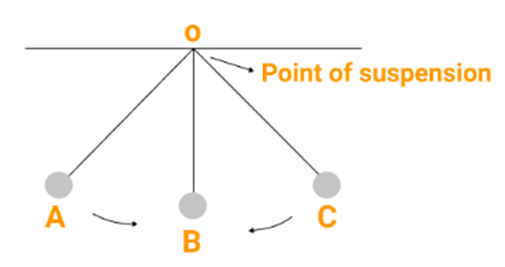
2. Scalar and Vector Physical Quantities
Scalar quantities
The quantities that depend upon magnitude and not the direction is called scalar quantities. They are represented as their own symbol.
Vector quantities
A physical quantity that depends upon magnitude as well as direction. They are represented by putting on their symbol.
Distance and Displacement:
Distance
• The distance travelled by a moving object is the length of the path the object takes.
• The measure of distance is a scalar quantity. The meter is the SI unit of distance.
Displacement
• It is the shortest path covered by a moving object in a specified direction from the point of reference (the initial position of the body).
• The meter is the SI unit of displacement.
• Displacement is a vector, which means that it is represented by a number with appropriate units and direction.
Difference between Distance and Displacement
|
Distance |
Displacement |
|
Distance provides the complete details of the path taken by the object |
Displacement does not provide the complete details of the path taken by the object |
|
Distance is always positive |
Displacement can be positive, negative or zero |
|
It is a scalar quantity |
It is a vector quantity |
|
The distance between two points may not be unique |
The displacement between two points is always unique |
3. Uniform and Non-Uniform Motion
Motion
Uniform Motion and Non-uniform Motion:
- If the body covers equal lengths in equal time intervals, so it is assumed to have a Uniform Motion.
- If the body covers unequal distances at equal intervals or equal distances at unequal intervals, so the body is said to have Non-uniform Motion.
Speed
Speed is defined as the total distance travelled by the object in the time interval during which the motion takes place. SI unit of speed is meter per second.
Speed = Distance Travelled / Time Taken
Velocity
The velocity of a body is known as the rate of change of displacement of a body with the passage of time. The velocity of a moving object is measured in meters per second in SI units.
Acceleration
Acceleration is a measure of the change in the velocity of an object per unit of time. SI unit of acceleration is ms-2. The equation can mathematically be written as:
Uniform Acceleration
The body is said to have a uniform acceleration if it is going on a straight path and the velocity shifts (increases or decreases) by equal proportions at equal time intervals.
Non-Uniform Acceleration
A body is said to have a non-uniform acceleration if the velocity shifts (increases or decreases) by unequal proportions at unequal time frames.
4. Derivation of Equation of Motion - Graphically,Circular Motion
Equation of motion by graphical methods
(i) Distance -Time Graph
• Distance – Time Graphs represents a change in position of the object with respect to time. The graph in case the object is stationary (means the distance is constant at all time intervals) – Straight line graph parallel to x = axis
• For a distance-time graph, time is taken on x-axis and distance is taken on the y-axis.
• For a body at rest, as the slope is zero, so the speed of the body is zero
• For a body moving with uniform speed
• For an accelerated motion., the slope of the graph is increasing with time
• For decelerated (speeding down) motion, the slope of the graph is decreasing with time.
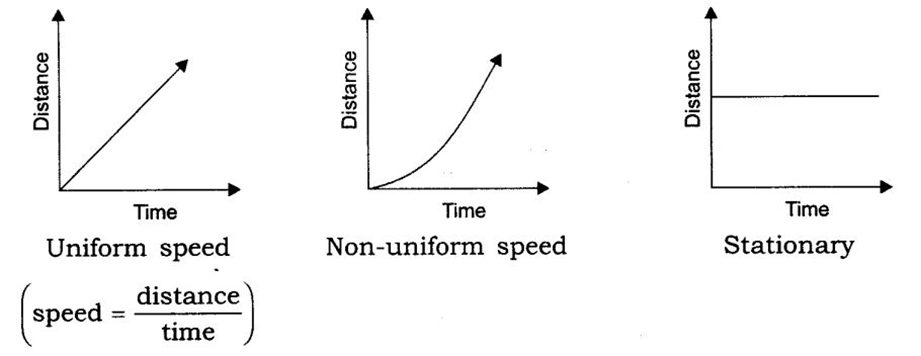
(ii) Velocity- Time Graph
• Constant velocity is a straight-line graph, velocity is always parallel to the x-axis. When a body is moving with a uniform velocity, the slope of AB indicates zero acceleration.
• When a body starts from rest and moves with uniform acceleration, then it is greater is the slope of the v-t graph, greater will be the acceleration.
• When a body is moving with uniform acceleration and its initial velocity is not zero.
• When a body is moving with increasing acceleration, the slope gradually increases with time.
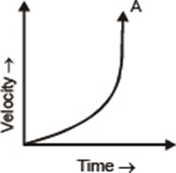
• When a body is moving with decreasing acceleration, the slope decreases with time.
• When a body is moving with uniform retardation and its initial velocity is not zero, as θ > 90°, the graph has a negative slope.
Derivations
(i)velocity-time relation:
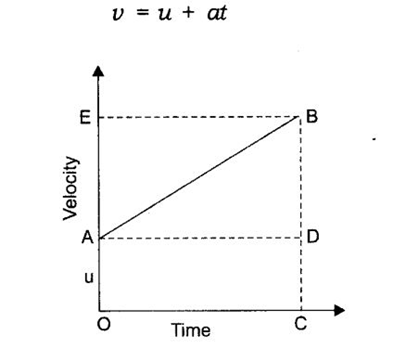
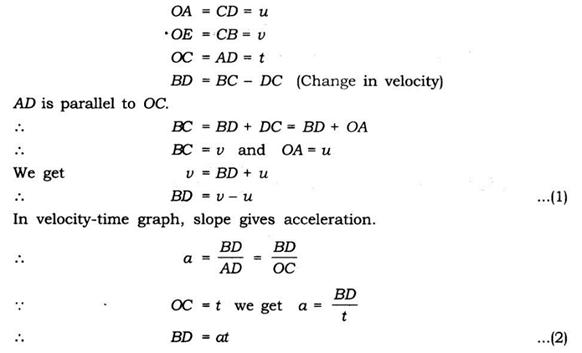

(ii) Position-time relation:
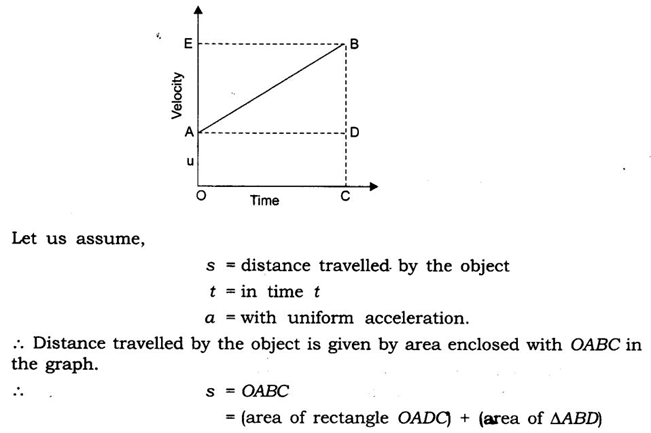
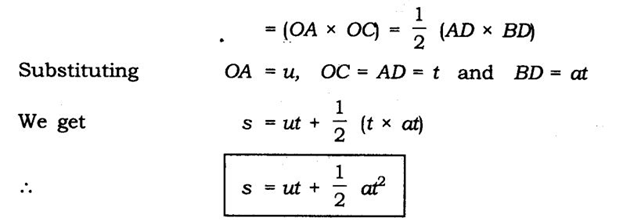
(iii) Position-velocity relation:
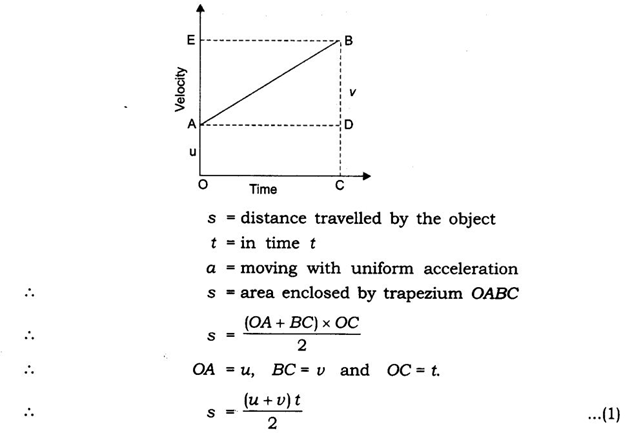
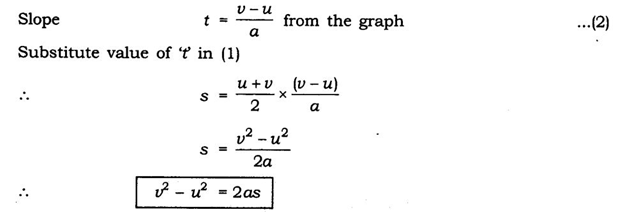
Uniform circular motion
When a body moves in a circular path with uniform speed, its motion is called uniform circular motion.

 Science Made Easy
Science Made Easy
 ACERISE INDIA
ACERISE INDIA
